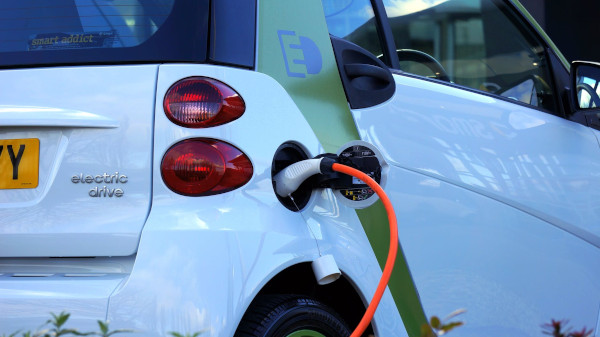It’s Time to Reduce Our Carbon Footprint

Opinion:
In the past 10 years or so, the discussion about global warming, what is causing it, its short and long-term implications, and what we can do about it has moved from a causal discussion to one of critical concern.
More and more countries are looking to see what can be done to reduce their carbon footprint. One area that has recently received a lot of interest is the automobile industry. Only five years ago, most people would have never given much thought to owning an electric automobile. A hybrid maybe, but the all-electric car never really entered the conversation. Now, certain European countries have announced that gasoline-powered vehicles will not be allowed to be sold in their country possibly as early as 2030 or even sooner. As we all know, the market for all electric vehicles and the public interest for electric vehicles in the U.S. has recently expanded at an exponential rate.
As a mechanical engineer, I am trying to understand in which direction we are headed regarding the use of gasoline and all fossil fuels but, more specifically, what the U.S. long-term plan. Around the world, each country is taking its own steps to address this concern and the direction of some countries is quite different than others. Some have plans to increase the use of solar and wind farms to provide at least some percent of their energy needs. Others are in the midst of construction of nuclear power plants.

At the start of 2022, it was reported that at least 55 nuclear power plants were under construction with more in the works. As many of 15 of those are in China alone. Still, other countries are reporting shutting down nuclear power plants. The U.S. has already shut down almost 40 of its nuclear plants. Other countries are looking at ways to extend the life of some of the aging plants still in operation. Still, others are trying to increase coal production and increasing fossil fuel storage in large underground natural bunkers and by other means.
In the United States, the push towards more electric vehicles is being promoted as a means to reduce emissions and cut down on our carbon footprint which, in theory, will begin to slow down global warming or at least slow down the rate of increase.
As a mechanical engineer whose firm designs many types of buildings such as educational facilities, laboratories, libraries, office buildings and others, we often have to make decisions in conjunction with our clients on which types of mechanical systems to design for a building and specifically what type of heating system to design. These systems range from all electric, electric heat pumps, AC units with gas heat, and several different hydronic systems, such as electric boiler and gas boiler systems.
Sensing that the direction in which many in the U.S. want is to reduce our carbon footprint, I put the question out there on an engineering online forum asking if we, the engineers, architects and owners, will be asked to reduce the carbon footprint in buildings by eliminating equipment using fossil fuels such as boilers and water heaters.

I received, as you might expect, a mixed response. Some engineers said that their state or their county was already not allowing the use of fossil fuels in building heating systems. Others argued that to eliminate gas heating systems, for example, was not really practical in colder climates as some systems such as heat pumps have poor performance in cold climates. Overall, I believe that with the exception of a few isolated instances, no consensus exists in the engineering community on how we should be moving forward. However one feels about the issue, it would make sense to have those discussions now rather than later. The systems put in buildings can last 30 years or longer, so many of the systems being installed or planned now will be in operation for a long time.
There are many ideas being tossed around on how we should address the reduction of carbon footprints around the world, which would benefit our environment and hopefully have an impact on global warming. One such idea in the U.S. is to develop more and better mass transportation systems in some of the larger and mid-sized cities which would get more vehicles off the road.
However, it seems to me that the government does not seem to want to take an active role -- at least in the mid-sized cities. In Columbia, South Carolina, where I work, there were some groups as long as 30 years ago pushing for a light rail or other type mass transportation system. This idea received very little traction. Recently, the government has committed approximately $1.6B to primarily upgrade one major intersection into the city and add additional lanes on some of the interstates. It does not seem that much thought was given to mass transportation to reduce the number of vehicles on the road. I know that there is a great need to fix roads and bridges around the country, but wonder how much effort is being done to actually reduce the number of vehicles on the road.

Another suggestion is to have utility companies charge a base for a homeowners’ energy bills -- whatever is deemed average for an average-sized home. The government would then add a surcharge for each homeowner that exceeded that consumption. For example, if an average-sized home was something like 2,400 square feet and its consumption was 800 kwh per month, a surcharge would be added for consumption over that amount, which could be increasingly higher the greater the baseline was exceeded. For obvious reasons, as attractive as this might sound to reduce the carbon footprint of a residential home, I don’t think this idea will garner interest among government officials or the utility companies. A parallel idea was one where a demand charge was added to the residential bill. This might have a similar effect on a homeowner’s carbon footprint, and I imagine would receive a similar response to the energy surcharge.
What we have now in the U.S. and most parts of the world is a lot of interest and ideas on how to address our carbon footprint to reduce global warming. While we cannot dictate to the rest of the world what we think needs to be done, we can certainly lead by example if we want to take those necessary steps. It seems to me that if we look where we should be in the future, we need to start coming together now and discuss the best ways to move forward. These are difficult issues potentially impacting all of our lives. We are creatures of comfort and generally don’t like drastic changes to our lifestyles. We may not have to make drastic changes, but if we are going to address this issue, some changes need to be made and they need to be made soon, instead of being put on hold for future generations to tackle.
Author Bio:
Dan Reider is a contributing writer at Highbrow Magazine and a mechanical engineer based in Columbia, South Carolina.
For Highbrow Magazine
Image Sources:
--Chris Boutillier (Pexels, Creative Commons)
--Lara Jameson (Pexels, Creative Commons)
--Mike (Pexels, Creative Commons)
--Tommaso Sansone (Wikimedia, Creative Commons)































































































































































































































































































































